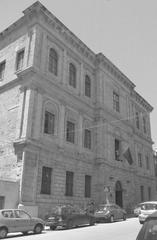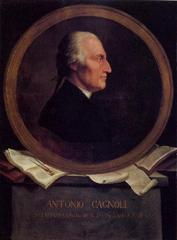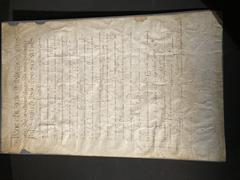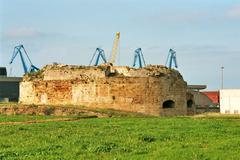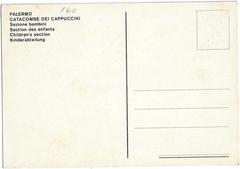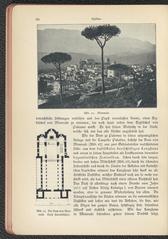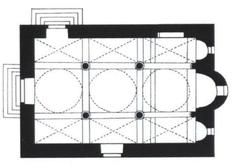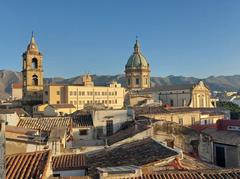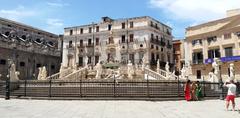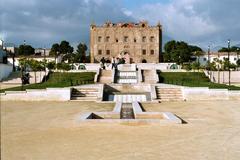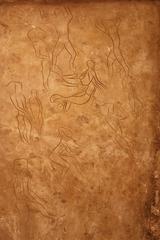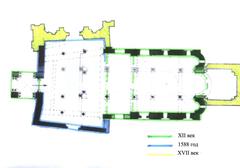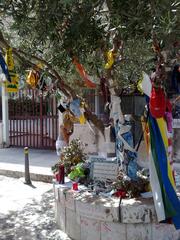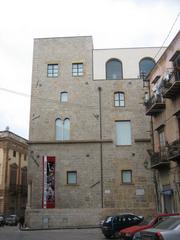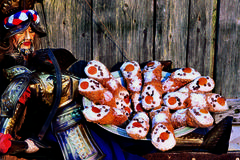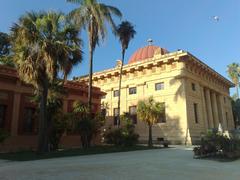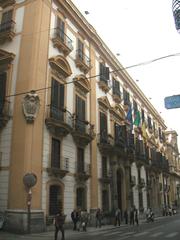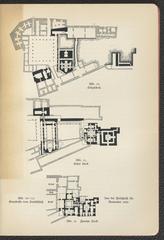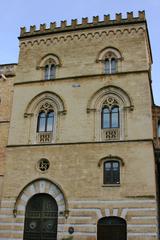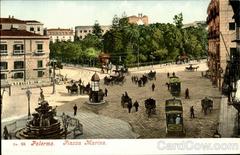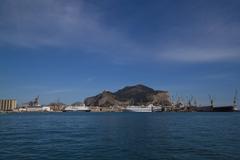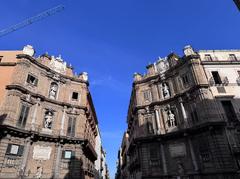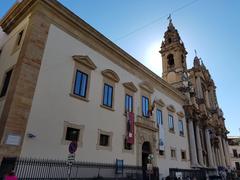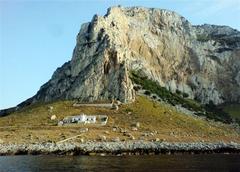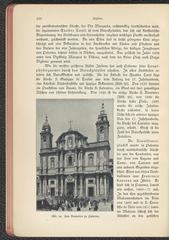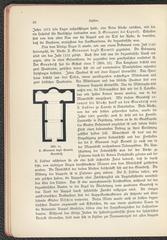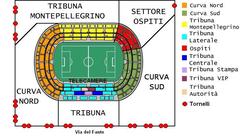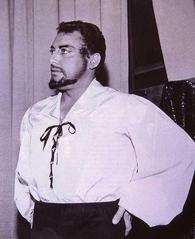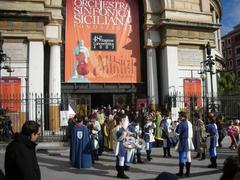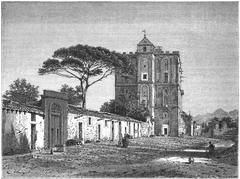
Palermo Historic Centre: Visiting Hours, Tickets, and Travel Guide
Date: 04/07/2025
Introduction
Palermo’s historic centre stands as a vibrant crossroads of Mediterranean history, civilization, and culture. As the capital of Sicily, Palermo reflects millennia of diverse influence—Phoenician, Greek, Roman, Arab, Norman, Byzantine, and Spanish—visible in its architecture, cuisine, markets, and living traditions. Recognized as a UNESCO World Heritage Site for its unique Arab-Norman architectural ensemble, the city invites travelers to explore its layered past and dynamic present. This guide provides a detailed overview of Palermo’s must-see historical sites, practical travel tips, up-to-date visiting hours, ticket information, and essential advice for an enriching experience in the heart of Sicily (UNESCO; travelshelper.com).
Table of Contents
- Brief Historical Overview
- Cultural Significance and Living Traditions
- Key Historical Sites: Visiting Hours & Tickets
- Markets, Food, and Festivals
- Practical Visitor Tips
- Accessibility and Transportation
- Preservation and Challenges
- Frequently Asked Questions
- Conclusion & Call to Action
- Sources and Further Reading
Brief Historical Overview
Prehistoric to Roman Era
Palermo’s origins date back to prehistoric settlements, with the Addaura caves on Monte Pellegrino featuring Paleolithic carvings (Wikipedia). By the 8th century BCE, Phoenicians established “Ziz” as a key trading outpost, later named “Panormos” (“all-port”) by Greeks due to its strategic harbor. The city’s prime location drew Carthaginian and, subsequently, Roman interest. After the First Punic War, Palermo became part of the Roman province of Sicily, flourishing as a regional hub (travelshelper.com).
Arab-Norman Period and UNESCO Heritage
Palermo’s most celebrated era began with the Arab conquest in 831 CE, transforming the city into the capital of the Emirate of Sicily. New crops, irrigation systems, and a cosmopolitan atmosphere emerged, shaping today’s historic markets and urban layout (charmingsicily.com). In 1072, the Normans ushered in a golden age, blending Arab, Byzantine, and Latin influences. The resulting “Arab-Norman” style is epitomized by sites like the Palazzo dei Normanni, Palatine Chapel, and Palermo Cathedral, recognized by UNESCO for their extraordinary syncretism (UNESCO; worldheritagesites.net).
Medieval to Modern Palermo
Successive rulers—including Hohenstaufen, Angevins, Aragonese, and Spanish—shaped Palermo’s urban fabric, adding Baroque palaces, piazzas, and churches like Quattro Canti. In the modern era, Palermo survived war, Mafia-related challenges, and urban renewal. Today, it thrives as a multicultural city, with the historic centre serving as a living testament to its resilient and dynamic identity (bewitchedbyitaly.com; Malay Mail).
Cultural Significance and Living Traditions
Palermo’s historic centre is more than a collection of monuments—it is a living, breathing space where daily life, markets, and festivals fuse with centuries-old traditions. Annual celebrations like the Festino di Santa Rosalia (July 15) unite the community through processions, music, and fireworks (italien.expert; Italy Heaven). Markets such as Ballarò and Vucciria are direct descendants of Arab souks, echoing the city’s multicultural roots (charmingsicily.com).
Key Historical Sites: Visiting Hours & Tickets
Palermo Cathedral (Cattedrale di Palermo)
- Hours: Daily, 7:00 AM – 7:00 PM (last admission 6:00 PM)
- Tickets: Free entry to cathedral; rooftop, treasury, crypts, and tombs require tickets (€5–€15, depending on areas)
- Highlights: Norman, Arab, Gothic, and Baroque elements; tombs of kings; panoramic terrace The Geographical Cure
Norman Palace & Palatine Chapel (Palazzo dei Normanni e Cappella Palatina)
- Hours: Tuesday–Sunday, 8:15 AM – 5:00 PM; closed Mondays
- Tickets: €12 standard; discounts for EU citizens under 26; online advance booking recommended
- Highlights: 12th-century mosaics, Arab-Norman architecture, royal apartments Italy Chronicles
Quattro Canti (Piazza Vigliena)
- Hours: Open public square, accessible anytime
- Highlights: Iconic Baroque crossroads, fountains, statues, and seasonal symbolism Savoring Italy
Pretoria Fountain (Fontana Pretoria)
- Hours: Public square, always accessible
- Highlights: Renaissance “Fountain of Shame” with mythological statues World Guides
San Cataldo & La Martorana
- Hours: Daily, 9:00 AM – 1:00 PM & 3:00 PM – 6:00 PM
- Tickets: Combined ticket approx. €6
- Highlights: Arab-Norman-Byzantine architecture, red domes, mosaics Savoring Italy
Teatro Massimo
- Hours: Guided tours daily, 9:30 AM – 6:30 PM
- Tickets: Tours €8–€10; performance prices vary
- Highlights: Italy’s largest opera house, renowned acoustics Italy Chronicles
Ballarò, Capo, and Vucciria Markets
- Hours: Ballarò and Capo: early morning to 2:00 PM; Vucciria: evenings, especially weekends
- Highlights: Street food, local produce, lively atmosphere Savoring Italy
Capuchin Catacombs (Catacombe dei Cappuccini)
- Hours: Monday–Saturday, 9:00 AM–1:00 PM & 3:00 PM–6:00 PM
- Tickets: Approx. €6; photography not permitted The Geographical Cure
Zisa Palace (Castello della Zisa)
- Hours: Tuesday–Sunday, 9:00 AM–5:00 PM
- Tickets: Approx. €5
- Highlights: Arab-Norman palace, Museum of Islamic Art Savoring Italy
Regional Archaeological Museum Antonio Salinas
- Hours: Tuesday–Sunday, 9:00 AM–7:00 PM
- Tickets: Approx. €6 The Geographical Cure
Church of San Giovanni degli Eremiti
- Hours: Daily, 9:00 AM–6:00 PM
- Tickets: Usually free or small donation Savoring Italy
Admiral’s Bridge (Ponte dell’Ammiraglio)
- Hours: Open public access Savoring Italy
Piazza Marina and Garibaldi Garden
- Hours: Open public space Cooltourismical
Museo delle Marionette
- Hours: Tuesday–Sunday, 10:00 AM–6:00 PM
- Tickets: Approx. €5 Savoring Italy
Markets, Food, and Festivals
Palermo is famed for its street food—arancine, panelle, sfincione, and cannoli—best sampled in historic markets (italien.expert). Ballarò, Capo, and Vucciria not only offer local delicacies but also serve as social hubs. The Festino di Santa Rosalia is Palermo’s most important festival, featuring religious processions, music, and fireworks each July, celebrating the city’s resilience and communal spirit (Italy Heaven).
Practical Visitor Tips
- Best Time to Visit: Spring (April–June) and autumn (September–October) offer mild weather and fewer crowds.
- Dress Code: Modest attire is required in religious sites; comfortable shoes recommended for cobbled streets.
- Language: Italian is predominant; basic English is spoken in tourist areas.
- Money: Euros; cards accepted in most places, but markets are often cash-only. Carry small denominations.
- Tickets: Advance online booking is recommended for popular sites like the Palatine Chapel and Norman Palace.
- Safety: Palermo’s centre is generally safe; beware of pickpockets in crowded areas and markets (Travel to Italy Guide).
- Siesta: Many businesses close 1–4 PM; plan accordingly.
Accessibility and Transportation
- Walking: The historic centre is best explored on foot due to narrow alleys and pedestrian zones. Wear sturdy shoes.
- Public Transport: AMAT buses and trams connect the centre with outlying areas. Single ticket: €1.40 (valid 90 minutes). Metro (Trenitalia) links the centre to the airport; tickets: €1.70 (Travel + Leisure).
- Taxis: Use authorized services; airport transfers cost around €50.
- Parking: Limited in the centre due to ZTL (limited traffic zones); park on city outskirts or at your hotel (Salt in Our Hair).
- Accessibility: Many major monuments offer wheelchair access, but some streets are uneven. Check individual site details in advance.
Preservation and Challenges
As Palermo’s popularity grows, the city faces challenges: urban degradation, gentrification, and the impact of mass tourism (Malay Mail). Local initiatives aim to balance economic revival with preservation of cultural identity. Restoration projects, restrictions on new businesses in historic zones, and promotion of sustainable tourism are ongoing (travelshelper.com).
Frequently Asked Questions
Q: What are the visiting hours for Palermo’s main attractions?
A: Most major sites open by 8:00–9:00 AM and close by 5:00–7:00 PM. Some, like the Norman Palace, are closed on Mondays. Markets are best visited in the morning.
Q: How do I buy tickets for the Palatine Chapel and Norman Palace?
A: Purchase tickets online in advance or at the entrance. Online booking is highly recommended for peak seasons.
Q: Are Palermo’s street markets open every day?
A: Ballarò and Capo markets operate daily in the mornings; Vucciria is especially lively at night.
Q: Are the historic sites wheelchair accessible?
A: Many are, but some streets and older buildings have limited access. Check each site individually before visiting.
Q: Is Palermo safe for tourists?
A: The city is generally safe, with the usual precautions for petty theft in crowded or touristy areas.
Conclusion & Call to Action
Palermo’s historic centre offers a journey through time—where Arab-Norman mosaics, Baroque piazzas, and lively markets create a unique, living tapestry of Mediterranean culture. For the best experience, plan your visit by checking opening hours, booking tickets in advance, and exploring beyond the main attractions. Dive into Palermo’s vibrant street life, savor its renowned cuisine, and join in its festivals to truly connect with the city’s spirit.
Ready to explore Palermo’s wonders? Download the Audiala app for immersive audio tours, ticket booking, and up-to-date travel tips. Follow us on social media for exclusive insights and special offers to enhance your Sicilian adventure!
Sources and Further Reading
- History of Palermo, Wikipedia
- Palermo Historic Centre: Visiting Hours, Tickets, and Must-See Historical Sites, travelshelper.com
- Arab-Norman Palermo and the Cathedral Churches of Cefalù and Monreale, UNESCO World Heritage Centre
- Arab-Norman Palermo, worldheritagesites.net
- Palermo Historic Centre Highlights, charmingsicily.com
- Palermo Sightseeing and Guide, italien.expert
- Exploring Palermo’s Historic Centre, italia.it
- Tourism Boom and Challenges in Palermo, Malay Mail
- Palermo Travel Guide, wearepalermo.com
- The Geographical Cure
- Italy Chronicles
- Savoring Italy
- World Guides
- Cooltourismical
- Travel + Leisure
- Salt in Our Hair
- Travel to Italy Guide
- Italy Heaven
- Cultured Voyages
- Gamin Traveler

